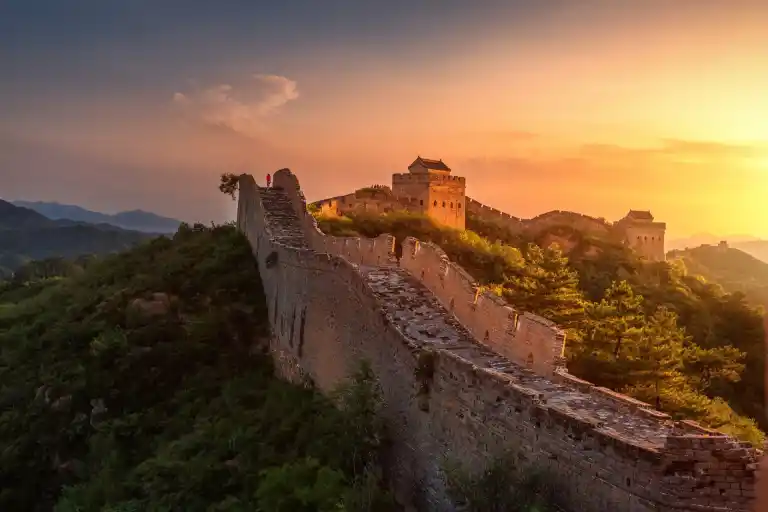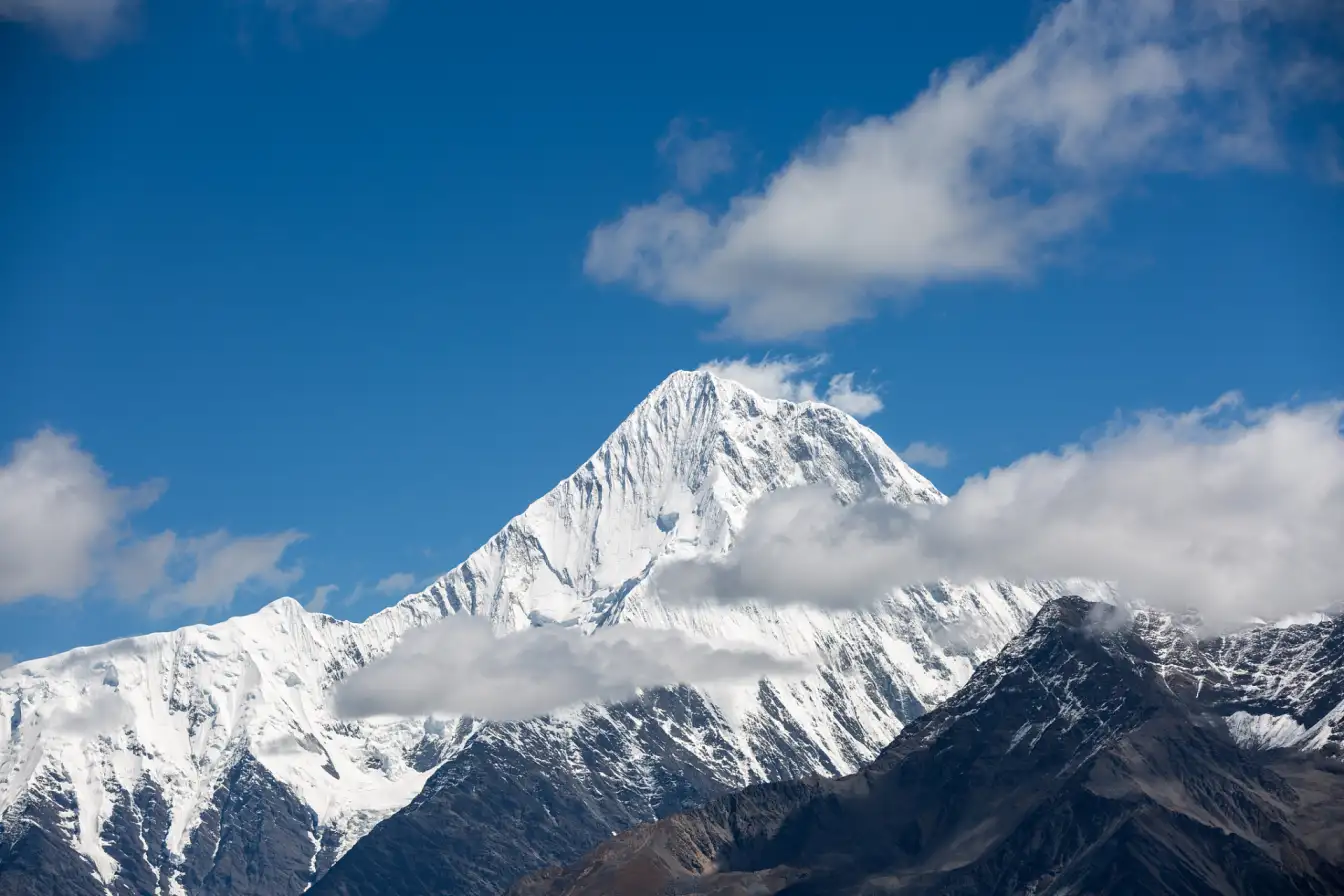
Mount Gongga (Minya Konka): The King of Sichuan Mountains
1. Location and Overview 🏞️
Location: Situated in the Daxue Mountain Range in Sichuan Province, China, Mount Gongga (贡嘎雪山), also known as Minya Konka, is the highest peak in Sichuan and the easternmost 7,000-meter peak in the world.
Overview: Known as the "King of Sichuan Mountains," Mount Gongga boasts a stunning elevation of 7,556 meters (24,790 feet). The area is renowned for its rugged terrain, deep valleys, and numerous glaciers, making it a popular destination for climbers and adventure enthusiasts.
2. Unique Features 🗻
Mount Gongga is celebrated for several unique features:
- Elevation: Standing at 7,556 meters, it is the highest peak in Sichuan Province.
- Glaciers: Home to over 70 glaciers, including the Hailuogou Glacier, which is accessible to tourists.
- Biodiversity: The region hosts a rich variety of flora and fauna, thanks to its diverse climatic zones.
- Sacred Significance: It holds spiritual significance for local Tibetan communities, who consider it a sacred mountain.
3. Seasonal Changes 🌨️
- Spring (March-May): Experience the melting snow and blooming flowers, making it an excellent time for trekking and photography.
- Summer (June-August): Enjoy warmer temperatures and lush green landscapes, ideal for hiking and outdoor activities.
- Autumn (September-November): Clear skies and colorful foliage make autumn the best season for stunning views and comfortable trekking conditions.
- Winter (December-February): Encounter a winter wonderland with snow-covered peaks and frozen landscapes, perfect for winter sports enthusiasts.
4. Best Time to Visit ☀️
The best time to visit Mount Gongga is during the autumn months (September to November). The weather is generally stable, with clear skies providing excellent visibility and breathtaking views.
5. Travel Tips ✈️
- Altitude Preparation: Acclimatize to the high altitude gradually to avoid altitude sickness.
- Weather Gear: Bring appropriate clothing for varying weather conditions, including rain, snow, and cold temperatures.
- Local Guides: Hire experienced local guides for trekking or climbing to ensure safety and better navigation of the terrain.
- Permits: Obtain the necessary permits for trekking or climbing in the region.
- Health Precautions: Stay hydrated, eat well, and take necessary medications to prevent altitude sickness.
6. Cultural Significance 🏔️
Mount Gongga holds significant cultural and spiritual importance for the Tibetan communities. It is considered a sacred mountain, and many pilgrims undertake journeys to pay their respects and seek blessings.
7. Tourist Attractions 🚶
- Hailuogou Glacier (海螺沟冰川): Famous for its accessible glaciers and hot springs.
- Konka Monastery (贡嘎寺): A significant spiritual site for Tibetan Buddhism.
- Gongga Temple (贡嘎庙): Located at the base of the mountain, offering stunning views and spiritual solace.
- Gongga South Ridge (南坡): A challenging trek offering panoramic views of the peak.
8. Nearby Attractions 🏞️
- Luding Bridge (泸定桥): A historic suspension bridge over the Dadu River, known for its significance in Chinese history.
- Danba Tibetan Village (丹巴藏寨): Known for its traditional Tibetan architecture and beautiful landscape.
- Tagong Grassland (塔公草原): A vast grassland offering stunning views of Mount Yala and a glimpse into Tibetan nomadic culture.
9. How to Get There 🚁
- By Air: Fly to Chengdu Shuangliu International Airport (成都双流国际机场), then take a domestic flight or bus to Kangding (康定), the closest city to Mount Gongga.
- By Bus: From Chengdu, take a long-distance bus to Kangding. This journey provides scenic views of the Sichuan landscape but takes several hours.
- By Car: Renting a car or hiring a private driver from Chengdu to Kangding offers flexibility and the opportunity to stop at various scenic spots along the way.
10. Practical Information 💼
- Permit Fees: Entry fees and permit costs vary depending on the specific areas and activities, generally ranging from 100 to 300 RMB (approximately $14 to $42 USD).
- Opening Hours: Most attractions are open year-round, but some areas might be inaccessible during winter due to heavy snowfall.
- Accommodation: Options range from guesthouses and lodges in nearby towns to campsites for those trekking or climbing.
11. Local Cuisine 🍲
- Yak Meat (牦牛肉): Savor dishes made from yak meat, a staple in Tibetan cuisine, known for its rich flavor.
- Tsampa (糌粑): A traditional Tibetan food made from roasted barley flour, often mixed with butter tea.
- Butter Tea (酥油茶): A traditional Tibetan tea made with butter, salt, and tea leaves, providing warmth and energy in cold climates.
- Tibetan Momo (藏式饺子): Steamed dumplings filled with meat or vegetables, a popular Tibetan snack.
12. Precautions to Take ⚠️
- Altitude Sickness: Be aware of the symptoms of altitude sickness and acclimatize slowly.
- Weather Changes: Prepare for sudden weather changes, especially in higher altitudes.
- Respect Local Culture: Be respectful of local customs and traditions, especially when visiting sacred sites.
- Environmental Protection: Practice "Leave No Trace" principles to preserve the natural beauty of the area.
13. Conclusion 🌄
A journey to Mount Gongga offers an extraordinary blend of adventure, natural beauty, and cultural richness. Whether you are an avid trekker, a spiritual seeker, or simply a nature enthusiast, this majestic mountain promises a memorable experience. Plan carefully, respect the environment and local culture, and let the grandeur of Mount Gongga inspire and rejuvenate your spirit.


















Comments
Leave a reply